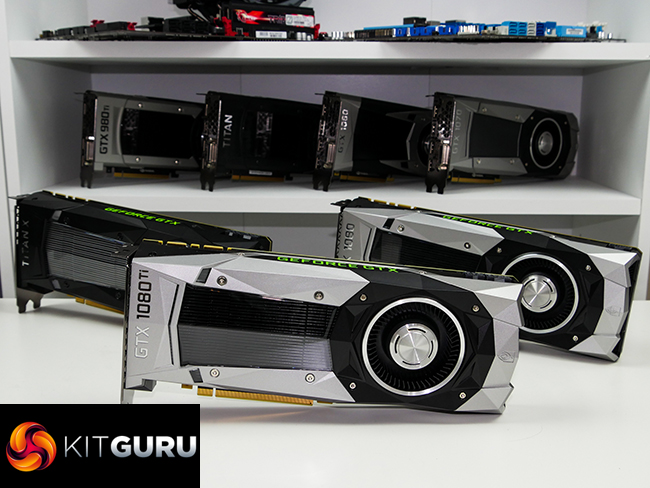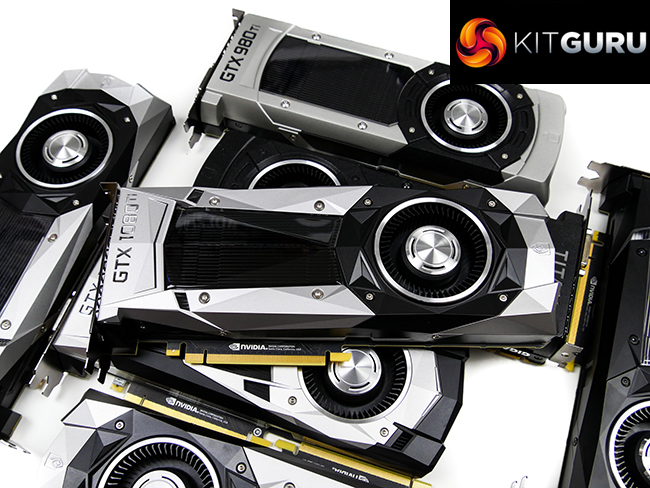With the GTX 1080 Ti, Nvidia has ushered in a new level of performance at a price point that doesn't include four numbers after the pound sign. The short of it is that you get slightly higher performance than a Titan X Pascal but rather than a £1,179 fee for the now discontinued card, the asking price for GTX 1080 Ti in its Founder's Edition form is £699. It's hard to argue with that kind of value for money if you require the type of GPU horsepower that 4K60 and 1440P high-refresh rate monitors demand.
As we have just eluded to, the GTX 1080 Ti joins Titan X Pascal by being a single-GPU graphics card that is truly capable of pushing a 60+ average frame rate at 4K. In seven of the eight games we test with, GTX 1080 Ti was pushing around 60 FPS or higher average frame rates while also typically leveraging the highest image quality presets available. Before now, that kind of liberty from a single graphics card would have had you staring the £1,179 Titan X Pascal in the face while listening to whining sounds emerging from your wallet.
Have your sights set on a brand new high-refresh rate 4K monitor when they start to emerge in the coming months? The graphics setup required to drive such frame rates at the 4K resolution just got a whole lot cheaper thanks to the GTX 1080 Ti. Save up a couple of extra hundred pounds and you can buy a pair of GTX 1080 Ti cards for SLI, which should deliver superb 4K high-refresh rate gaming performance when coupled with a fast CPU.
Nvidia shouted about a 35% performance increase over the GTX 1080 and those claims look to be true, based on our testing. They even seem a little conservative when looking at performance metrics for the higher-resolution 4K tests. Change the comparison to the fastest single-GPU cards from the last generation – AMD's R9 Fury X and Nvidia's GTX 980 Ti (which traded blows with Titan X Maxwell) – and performance improvements in the range of 70-90% are regularly observed for 4K gamers.
Despite being a relative bargain compared to the Titan X Pascal, for its ~35% performance increase over the GTX 1080, the GTX 1080 Ti commands a ~41% price increase over Nvidia's MSRP (49% over the cheapest models currently available). What this suggests is that Nvidia is charging a premium for the liberty of higher performance from a single-GPU configuration. I'll let you form your own opinion on that point as many people will see it as fair whereas some buyers may instead lean towards the SLI route with a pair of cheaper cards.
Overclocking delivered good gains. We pushed the GPU core to the point where it was sometimes tiptoeing around the 2GHz frequency level under load. Coupled with a 200MHz (0.4Gbps effective) increase to the GDDR5X VRAM, our overclocking efforts netted performance improvements of 9% in Rise of The Tomb Raider and 10% in Gears of War 4, both at 4K.
Power consumption is as expected from the 250W-rated graphics card. GTX 1080 Ti commanded around 27% more power than GTX 1080 in our gaming load test (though the number will be closer to 35% in other tests, based on the TDP). That's a fair compromise for the performance increase offered. Compared to last generation's gaming beasts – the GTX 980 Ti and R9 Fury X – power draw for the GTX 1080 Ti is roughly similar but its performance is at a whole different level.
The Founder's Edition cooler is OK. It isn't the best when it comes to temperatures or noise output but it is able to cool the 250W GPU with only a small performance loss due to thermal throttling. We expect to see coolers from board-partners offer better performance but they are also likely to command a higher price when they start to become available in April. Nevertheless, a ‘Performance Mode‘ switch in GeForce Experience that ramps up fan speed and power budget for higher performance and better cooling would be welcomed.
With a slightly cut-down GP102 GPU compared to Titan X Pascal and increased core and GDDR5X memory frequencies, the GTX 1080 Ti is able to take its place at the top of the graphics card food chain. Factor in the £480 reduction in cost against the Titan X Pascal and a realistic lack of alternatives at this price and performance level, and Nvidia's GTX 1080 Ti 11GB looks to be an excellent option for enthusiasts who have the gaming requirements to justify the best.
Discuss on our Facebook page HERE.
Pros:
- £480 cheaper than Titan X Pascal and higher performance on average.
- Performance improvements of more than 30% against GTX 1080.
- Extremely impressive efficiency gains versus last generation's gaming beasts – the GTX 980 Ti and R9 Fury X.
- 11GB VRAM is plenty for 4K gamers and should suffice for 5K gaming.
- A true 4K60 graphics card.
- Compatibility is a strength for the cooler design – mini-ITX and SLI usage have been considered.
- Good overclocking gains.
Cons:
- Founder's Edition cooler causes thermal throttling by default.
- The Founder's Edition cooler is louder than some board partner designs.
- No passive fan mode under low load, like on many board partner designs.
KitGuru says: If you want the fastest single-GPU graphics card on the market, Nvidia's GTX 1080 Ti is just that. Better yet, its £699 price tag is £480 cheaper than the previous king.
Be sure to check out our sponsors store EKWB here
 KitGuru KitGuru.net – Tech News | Hardware News | Hardware Reviews | IOS | Mobile | Gaming | Graphics Cards
KitGuru KitGuru.net – Tech News | Hardware News | Hardware Reviews | IOS | Mobile | Gaming | Graphics Cards





